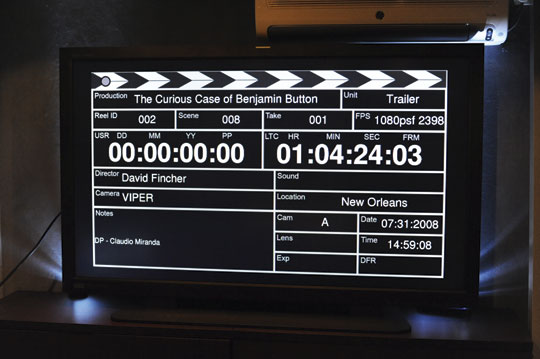
Life Beyond The DIT
Posted on Jan 5, 2011 by Alex Fice
Pure Digital Services is a new company with the express mission to take data from cameras and present it in an acceptable format to a post facilityDigital cameras have brought some wonderful benefits, unfortunately it has also highlighted a number of potential workflow issues that need to be addressed by productions today.
Recording to solid state media produces huge amounts of image data that must be copied and archived off before it can be re-used. To ensure a seamless workflow between shooting and post production, this data also needs to be logged, transcoded, displayed and output before it can be sent to editorial and other departments.
This takes time and skill, and the question the industry is asking is who is ultimately responsible for making sure this gets done correctly?
Previously production companies would use a film lab close to the location to deal with logging and transferring film stock. These labs were staffed by skilled technicians who would communicate decisions to the Production. In this new digital age, responsibility lies with the Digital Imaging Technician (DIT), which can encompass many roles on set including image management, data management, quality control, archiving and setting up a digital infrastructure. It’s a role that has evolved naturally without a full understanding of what the task potentially entails.
For an industry that prides itself on quality, a situation that allows room for potential error can’t be good. Wouldn’t it be better if the responsibility was handed over to a dedicated team with the specialist knowledge to get the job done properly?
It was this thought process that led cinematographer Daniel Mulligan to launch Pure Digital Services (PDS), a new company that bridges the gap between shooting and post production by offering full digital motion picture lab and storage services.
Mulligan, whose knowledge of digital systems and file based workflows goes back many years, says: “Having spent the last 10 years filming and developing pioneering ways of shooting digitally, I recognised that the time was right for this type of service.
“Many post facilities would rather they had rushes delivered in a transcoded format so that they can start work on them on instantly. The problem of relying solely on a single DIT is simply one of scale: as the scale increases, so does the demand on the DIT. Larger data loads, such as the Epic shooting around 3Gb/min and HDR around 6Gb/min will require a full infrastructure of those data assets. The nature of the work is still similar to film, and we wouldn’t expect a film loader to process the actual stock. One of the main reasons for establishing PDS is that we feel the role needs to be done by a dedicated team on set, with the DIT being part of that team.”
PDS comprises post experts and cinematographers who have all honed their skills over many years. The company, which covers international markets including UK, Los Angeles, South Africa and India, facilitates a seamless digital workflow that will ultimately reduce production costs and take the hassle out of file transfers and archiving.
“What we bring to the equation are time and cost efficiencies,” Mulligan explains. “By providing full digital negative services, full insurance cover and a proven track record, PDS can run a production’s digital workflow and delivery requirements with no fuss. We take responsibility for the digital rushes and create an atmosphere that takes pressure away from both the DIT on location and the post house.”
PDS has already managed the digital negative and processing requirements for BBC Drama, BBC Natural History, commercials for Nat West, features shooting Arriraw in India and Canada and F35 data shoots in Sweden. At present budget is coming from the production companies but Mulligan believes this will change as the industry adapts to this new model.
“Perhaps budgets should now be seen as more of a joint effort,” he explains. “With front end rental now extremely competitive, the costs could be seen as part of the post process, pre-post if you like. By taking the savings on camera and enhancing the back end budget, the costs savings in time would far out way the perceived front end expense.”
Mulligan adds that using a service like PDS will ultimately save money, regardless of where the budget comes from.
“The cost savings begin with the time we save,” he says. “By introducing stringent quality control, we can sign shots as being completed and keep the production moving along. The service we provide supplies the skills and knowledge needed to run the digital pipeline on set and in post, allowing for a seamless process to become a reality.”
More information about Pure Digital Services can be obtained from the company’s website www.puredigitalservices.com










